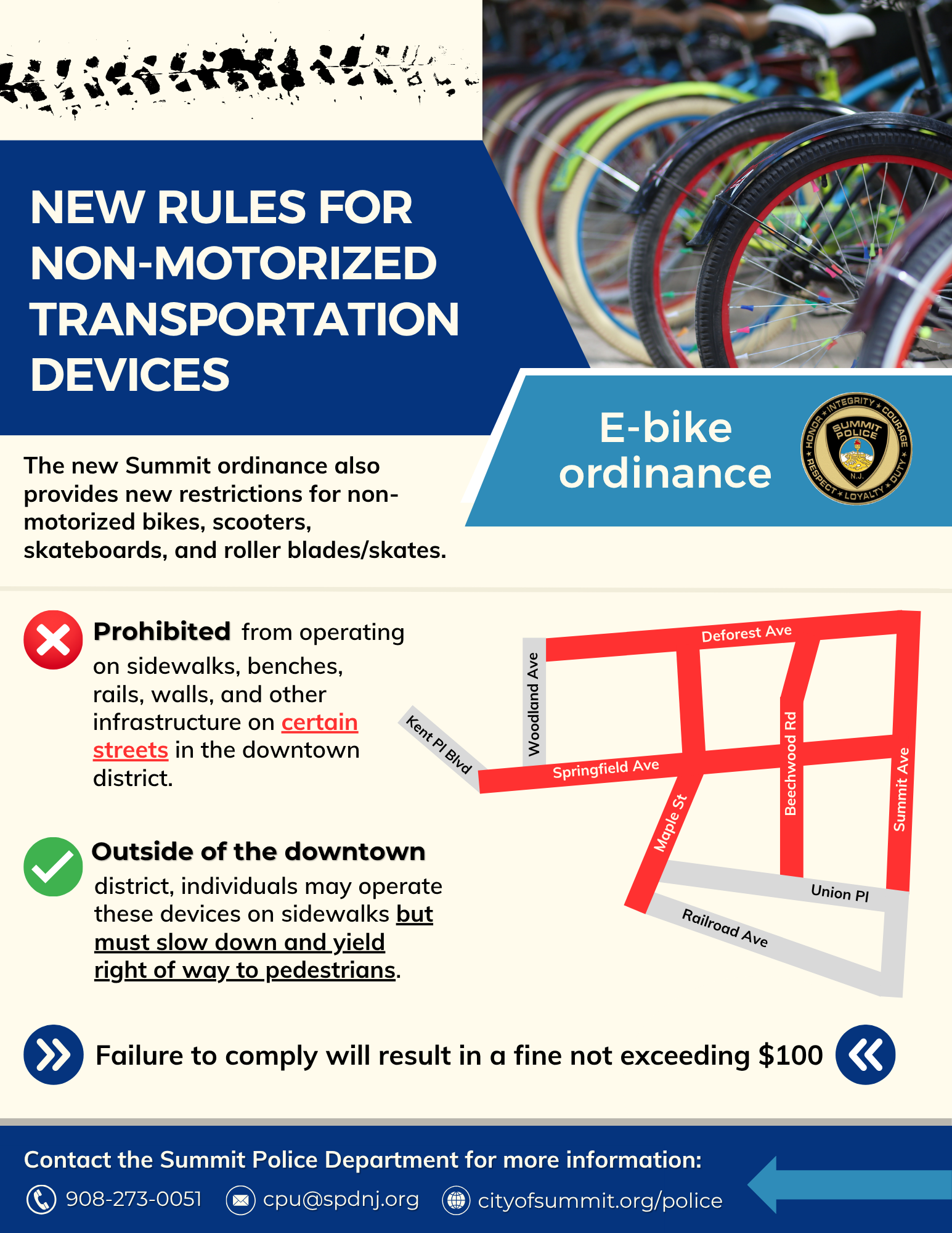Read and Share

|
December 23, 2025 Regulating e-Bikes and Scooters
While some cities are considering outright bans, others are looking to regulation to improve safety and reduce sidewalk and street congestion. These regulations typically include rules on speed limits, designated areas for riding, and age restrictions. Other important components are safety requirements such as helmet use and vehicle lighting, and registration and licensing for higher-powered models. In Summit, the recently enacted ordinance addresses where e-bikes and scooters may be used and penalties for failure to follow the rules:
Information on Summit’s, new ordinance and other approaches to keeping downtown streets safe appear regularly in the pages of Downtown Idea Exchange newsletter. Click below to learn more about Downtown Idea Exchange and other resources for revitalizing downtowns and commercial corridors. 
8" x 9", hardcover,
320 pages, $81.95. Recommended ReadingSignage and Wayfinding DesignWayfinding signage is the voice of downtown. It invites visitors in. It suggests the experience to follow. And it guides all users to the best that the city center has to offer. In one comprehensive volume, Signage and Wayfinding Design takes readers through the entire process of creating a wayfinding system for a single building, a downtown district, or an entire city. It is organized around a three-part approach to understanding and designing wayfinding signage: Content, graphics, and hardware systems. Each section includes the latest technology and requirements and is fully illustrated with over 350 full-color images of projects, concepts, drawings, and diagrams. This second edition of Signage and Wayfinding Design provides essential background, insights, and inspiration for everyone involved in wayfinding projects. Signage and Wayfinding Design is just one of the many books on Improving Parking & Access available from the Downtown Development Center. |

|
 Summit, NJ, is one of the many cities across North America grappling with the impact of e-bikes and scooters on downtown streets.
Summit, NJ, is one of the many cities across North America grappling with the impact of e-bikes and scooters on downtown streets.